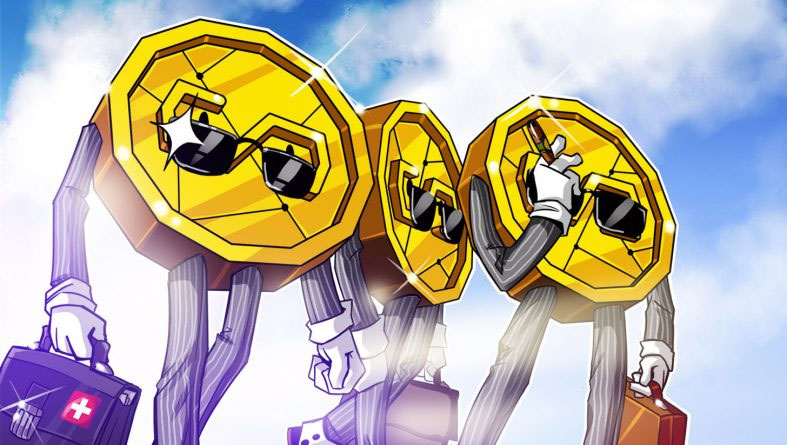
There are two types of cryptocurrencies in the crypto market, which from the outside may seem similar, but in realitythey perform completely different functions. We are talking about stablecoins and central bank digital currencies (CBDCs).
The former are backed by real assets, for example,fiat currencies, while the latter is a new form of national money. And if central banks and governments are working on the launch of CBDC, then private companies are responsible for issuing stablecoins. Let's figure out how stablecoins differ from CBDC and what is the role of these assets in the crypto market.
Stablecoins and CBDC on the example of Russia
Let's start with a simple example:The head of Sberbank, German Gref, has repeatedly said that his bank is developing a stablecoin called Sbercoin, the rate of which will be pegged to the ruble. It was assumed that the new form of digital currency will be introduced in the spring of 2021. However, after the company submitted an application to the Central Bank of the Russian Federation in January to register its blockchain platform on which a ruble stablecoin would be launched, there was no more news about the project.
Moreover, the Bank of Russia and the Ministry of Finance do notsupport Gref's idea, and also openly oppose private banks having their own currency. Back in April, the director of the Department of Financial Technologies of the Central Bank (DFT), Ivan Zimin, stated that the regulator was thinking about limiting the use of stablecoins in settlements by analogy with unsecured cryptocurrencies.
At the same time, according to the current RussianAccording to the legislation, stablecoins do not belong to the category of digital currencies, so settlements in them are not prohibited in Russia. As part of the Law “On CFA”, which came into force in January 2021, stablecoins can only be issued by operators included in the register of the Central Bank. However, the Central Bank insists that the digital ruble must be issued and supported by this financial regulator.
“We are, in fact, like the Central Bankwe adhere and constantly adhere to the following ideology that both cryptocurrency and stablecoins cannot be official means of payment, only the digital ruble can be such means "- said Zimin. His position is also supported by the Ministry of Finance.
How are stablecoins different from CBDC?
Let's continue the example with the digital ruble andpotential stablecoin from Sber. The German Gref coin, even if it is tied to the national currency exchange rate and is also backed by it, will not be issued by the Central Bank. And this contradicts the policy of financial regulators in the vast majority of countries in the world, since it undermines their right to issue money.
If the digital ruble, that is, CBDC, isthe obligation of the Bank of Russia, in fact, an additional form of money to cash and non-cash, then stablecoins are a digital currency issued by a private company or organization and secured by some kind of obligations: money, gold, precious metal or any other real asset.
Another significant example relates tostablecoin Diem (formerly Libra) from Facebook, which it planned to launch back in 2019, but was never able to do so due to problems with financial regulators in a number of countries.
Back in the fall of 2019, the G7 group, or “GreatSeven” prepared a report in which they stated that stablecoins threaten the global financial system. G7 finance ministers have stressed that proprietary currencies from technology companies such as Facebook pose risks for users and also pose risks from the potential laundering of criminal proceeds.
At the same time, French politician Bruno Le Maireargued that the cryptocurrency from Mark Zuckerberg's social network poses a threat to national currencies in both underdeveloped and developed countries. According to the politician, Facebook's Diem cryptocurrency usurps the sovereign right of states to issue their own currencies. And this is probably the main difference between stablecoins and CBDCs.
Moreover, the news that Facebook canto release its own stablecoin, pushed states to develop their own national cryptocurrencies. For example, in 2019, against the background of a social network project, Germany, Sweden and other countries reported this.
According to the Bank for International Settlements (BIS),By August 2020, about 80% of central banks around the world were working on the launch of national digital currencies (CBDCs). By now, some of them have already tested their CBDCs, while others are developing them.
China as a Leader in CBDC Development
In April, Bloomberg published material inwhich described the US President Joe Biden administration's concerns about China's success in issuing a CBDC - the digital yuan (DCEP). Some US officials are concerned that China is trying to take away the dollar's leadership position in the global financial system.
The new digital currency is currently being tested inthe cities of Shenzhen, Suzhou, Chengdu and the new state-level region of Xiong'an, Hebei Province. During one test, which ended earlier this year, residents of the city of Suzhou made almost 140,000 purchases using the digital yuan, totaling $3 million. During the test, the country's authorities distributed DCEP through a lottery. A total of 95,600 tickets were activated, each containing 200 digital yuan.
China plans to use the digital yuan in Beijing during the 2022 Winter Olympics.
The role of stablecoins in the cryptoindustry
As of May 13, the capitalization of theUSDT, a popular dollar stablecoin from Tether, is $ 57.8 billion.At the same time, the daily trading volume with a stable cryptocurrency is more than $ 233 billion.This is three times higher than that of other leaders of the crypto market - BTC and ETH, the daily trading volume of which is $ 106 and $ 98 billion respectively.
The secret of USDT is simple - it is traded on mostlargest crypto exchanges, as it allows traders to take profits without converting funds into fiat. It's cheaper and also easier on the platforms themselves from a regulatory perspective. Maintaining USD-backed stablecoin trading pairs is not the same as dealing directly with a domestic currency. At the same time, there is almost no difference for the user. When converted, the price of USDT will almost always be $1.
The stablecoin market is just beginning to develop,however, it is already clear that it has the potential to become widespread among users, even those far from the world of cryptocurrencies. For this, stablecoins should be actively used as a means of payment, as well as for money transfers.
Where is it more profitable to buy cryptocurrency? TOP-5 exchanges
For a safe and convenient purchase of cryptocurrencies with a minimum commission, we have prepared a rating of the most reliable and popular cryptocurrency exchanges that support deposits and withdrawals of funds inrubles, hryvnias, dollars and euros.
The reliability of the site is primarily determinedtrading volume and number of users. By all key metrics, the largest cryptocurrency exchange in the world is Binance. Binance is also the most popular crypto exchange in Russia and the CIS, since it has the largest cash turnover and supports transfers in rubles from bank cardsVisa / MasterCardand payment systemsQIWI, Advcash, Payeer.
Especially for beginners, we have prepared a detailed guide: How to buy bitcoin on a crypto exchange for rubles?
Rating of cryptocurrency exchanges:
| # | Exchange: | Website: | Rating: |
|---|---|---|---|
| 1 | Binance (Editor's Choice) | https://binance.com | 9.7 |
| 2 | Bybit | https://bybit.com | 7.5 |
| 3 | OKEx | https://okex.com | 7.1 |
| 4 | Exmo | https://exmo.me | 6.9 |
| 5 | Huobi | https://huobi.com | 6.5 |
The criteria by which the rating is set in our rating of crypto-exchanges:
- Work reliability— stability of access to all functions of the platform, including uninterrupted trading, deposits and withdrawals of funds, as well as the duration of the market and daily trading volume.
- Commissions– the amount of commission for trading operations within the platform and withdrawal of assets.
- Feedback and support– we analyze user reviews and the quality of technical support.
- Convenience of the interface– we evaluate the functionality and intuitiveness of the interface, possible errors and failures when working with the exchange.
- Platform Features– availability of additional features — futures, options, staking, etc.
- final grade– the average number of points for all indicators determines the place in the ranking.

Rate this publication

